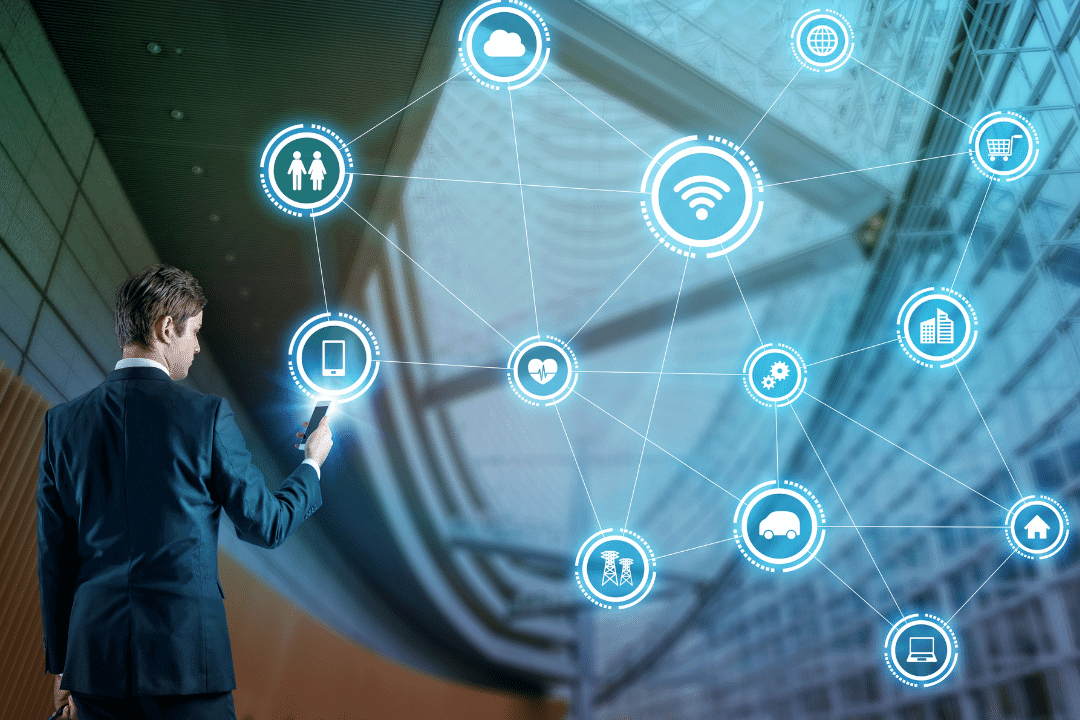These days, it’s not enough for a commercial building to be functional — it also needs to be smart. Smart buildings are the way of the future for architects, builders, and the people who live and work in these buildings every single day. Thanks to sensors, Power over Ethernet (PoE) tech, BAS systems (Building Automation Systems), and building management systems (BMS), smart buildings are able to perform tasks using several integrated automation systems and machine learning to improve building performance.
These systems are working 24/7 to improve operations performance, so it’s no wonder that so many large-scale builds are focusing on smart building design in the future. Today, we are going to be taking a look at some of the top smart building trends to help you stay ahead of the curve when it comes to architectural and operational innovations.
- Integrated Automation Systems for Security and Cybersecurity
Find out how developments in integrated automation systems allow for increased security measures
Integrated automation presents unique cybersecurity challenges.
Security has always been a top priority for commercial buildings. Thankfully, with the help of integrated automation systems, our buildings are more secure than ever before. Smart security systems rely on sensors and communication with other systems to monitor entry points, cameras, and lights at all times. Automated security systems also allow for other high tech integrations like smartphone apps and key cards.
Recently, these features of an integrated security system are becoming standard for all commercial buildings since they keep your building secure and make overall building operations much easier for staff.
What about Integrated Automation Systems for Cybersecurity?
When a building is operating within an IoT, especially for security systems and cameras, cybersecurity becomes a major concern. Your data, security checkpoints, and video cameras need to be virtually protected from hackers just like your building needs to be physically protected from intruders.
Major IoT providers have already considered these concerns and implemented cybersecurity measures. They are also constantly updating their security software to pinpoint and eliminate any potential threats or discovered vulnerabilities. Recently, there have been even more developments to incorporate biometric security measures into automated security systems to further enhance both physical and digital security.
- Smart Lighting Systems to Promote a Healthy Circadian Rhythm
Find out how integrated automation systems enable smart lighting by using sensors
Lighting affects all aspects of our life — including mood and sleep patterns.
Though smart lighting is not a new concept, commercial spaces are finding new applications and ways to improve and automate our daily lives. Recently, circadian lighting has become the major focus for many commercial property owners and managers.
As humans, we have a natural circadian rhythm based on light levels that tell us when we are feeling tired and when we are feeling awake. We experience this every day — as the sun goes down, you begin to feel tired and start yawning. When we work in offices with little natural lighting, it can throw our circadian rhythm out of whack.
The latest smart lighting developments take circadian rhythm into account and can automatically shift lighting hue and color throughout the day. By simulating sunlight, smart lighting systems have been proven to increase productivity and reduce fatigue.
- Air Quality Monitoring
Integrated automation systems can monitor and make automatic adjustments to improve air quality
Healthy air quality is more of conscious concern for employees than ever before.
Concern for workplace health and safety has seen a major spike in recent years. As employees return to the office for the first time in a while, air quality is listed as a top concern across industries. In addition to automatic filtration systems, air quality monitoring is now becoming popular as a part of integrated automation systems.
Air quality monitoring helps detect pollutants like CO2, nitrogen dioxide, and minute particles that can affect breathing. Ultimately, closely monitoring air quality will become essential for commercial spaces in the near future.
When employees feel their workplace is safe, comfortable, and healthy they report better performance and a higher quality working environment.
- Energy Efficiency
While your integrated automation system communicate, they are also using machine learning to streamline all operations and conserve energy
Green buildings save money and promote energy conservation.
One of the biggest financial reasons for an integrated automation system is the energy saving possibilities. When you integrate different systems in your building, they can communicate and use machine learning to optimize energy use for the property. For example, if your lighting sensors notice that interior lighting is on and there is natural lighting coming from outside, the sensors will automatically tell your lights to dim. As time goes on, these systems will further optimize energy-saving solutions used across all internal operations.
And there you have it — the top smart building trends for this coming year. Each year it is expected that the capabilities and applications of building automation systems will increase, so stay tuned for more information about future smart building innovations.
Zeeshan is a seasoned tech expert and senior writer at Teckrr.com. With over 10 years of experience in tech journalism, he brings insightful analysis and up-to-date information on the latest tech trends. Zeeshan holds a MBA degree from Business and Tech University and is known for his engaging writing style and ability to demystify complex tech topics. Stay connected with the cutting-edge of technology through his expert lens.

Leave a Reply